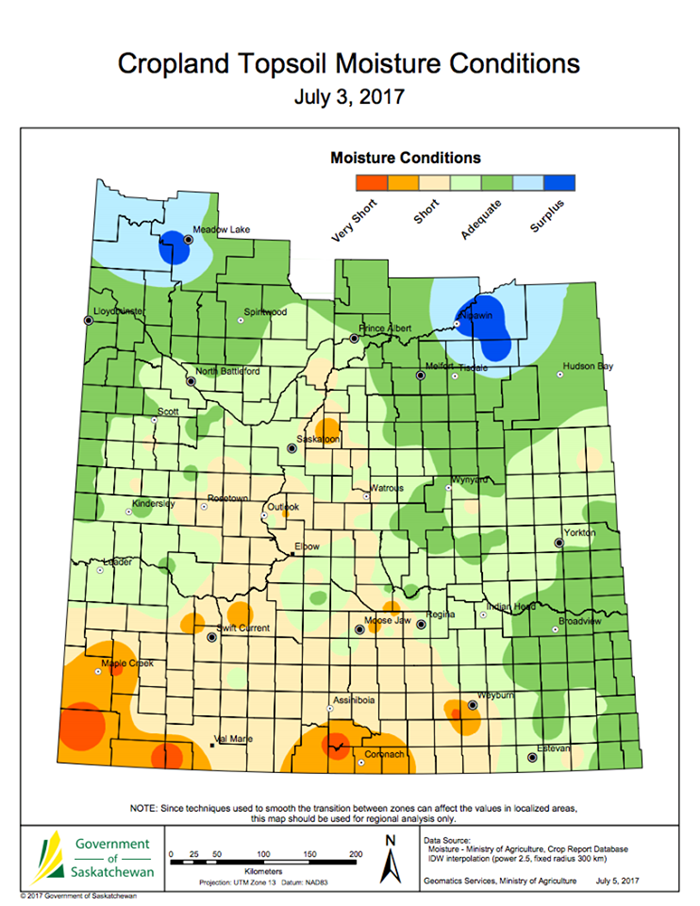Released on July 6, 2017

Haying is progressing in the province as livestock producers now have 19 per cent of the hay crop cut and 10 per cent baled or put into silage, according to Saskatchewan Agriculture’s Weekly Crop Report. Hay quality is rated as eight per cent excellent, 54 per cent good, 29 per cent fair and nine per cent poor. Pasture conditions are rated as six per cent excellent, 38 per cent good, 41 per cent fair, 13 per cent poor and two per cent very poor.
The majority of the province received very little rain this past week, ranging from negligible amounts in most areas to 78 mm in the Nipawin area. Many areas remain dry and producers are hoping for rainfall to boost crop development and hay and pasture growth.
Across the province, topsoil moisture on cropland is rated as five per cent surplus, 49 per cent adequate, 37 per cent short and nine per cent very short. Hay land and pasture topsoil moisture is rated as five per cent surplus, 40 per cent adequate, 38 per cent short and 17 per cent very short.
Overall, crops are at their normal stages of development for this time of year; however, there are some crops that are behind due to moisture issues. Twenty-six per cent of fall cereals are in the dough stage while nine per cent of spring cereals are in the heading stage. Two per cent of flax, 30 per cent of canola and mustard and 37 per cent of pulse crops are flowering.
Producers are wrapping up in-crop herbicide applications in most areas and starting to apply fungicides. While dry conditions are causing crop stress in most areas, particularly in the south, some areas in the north have issues with wet conditions. Crop damage this week was attributed to dry conditions, wind, insects, localized flooding and hail.
Producers are busy haying, scouting for disease and insects, hauling grain, fencing and repairing equipment.
SaskPower received eight reports of farm equipment coming in contact with power lines this week, bringing the total for June to 37. One hundred and seventy-six incidents have occurred so far in 2017.
A complete report is available online at http://www.publications.gov.sk.ca/redirect.cfm?p=86273&i=99838.
Follow the 2017 Crop Report on Twitter at @SKAgriculture.
-30-
For more information, contact:
Brent Flaten
Agriculture
Moose Jaw
Phone: 306-694-3714
Email: brent.flaten@gov.sk.ca
